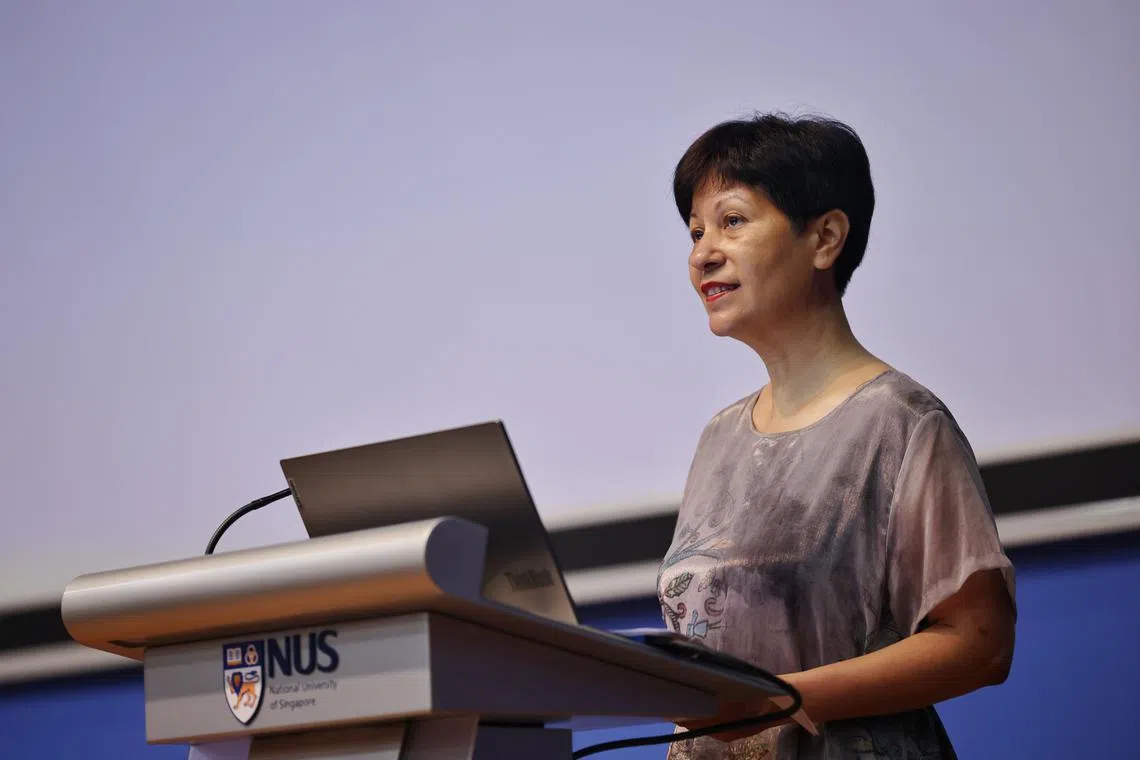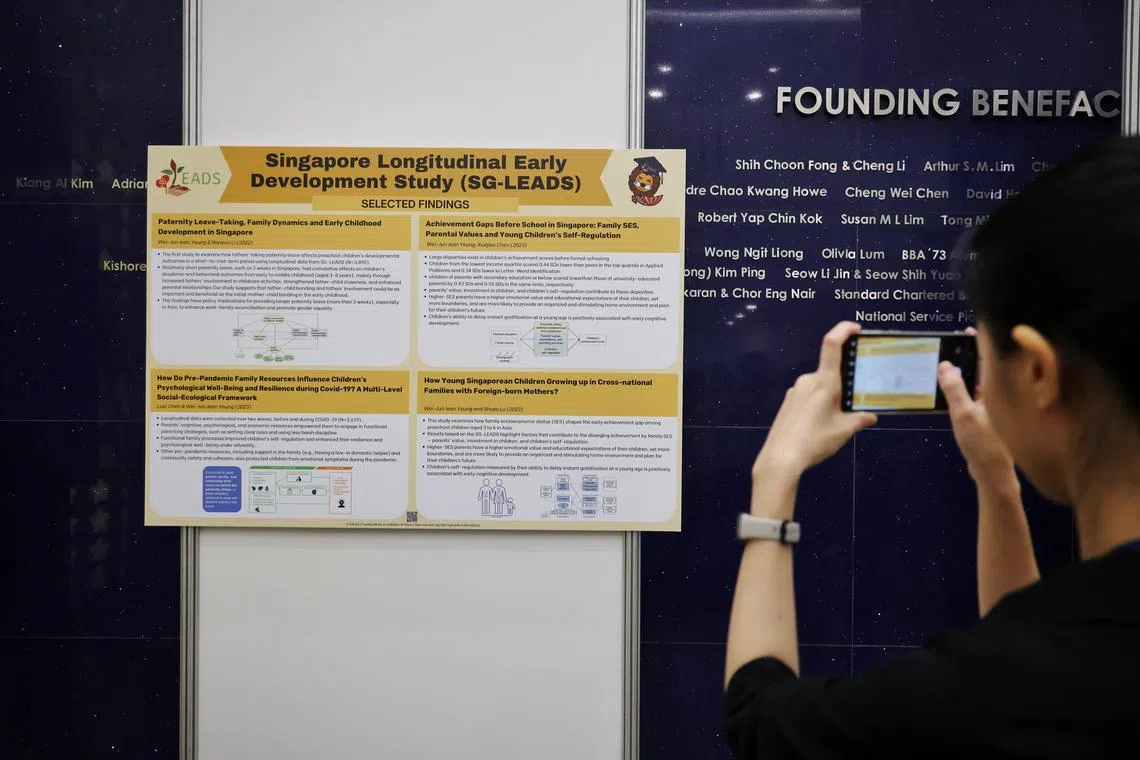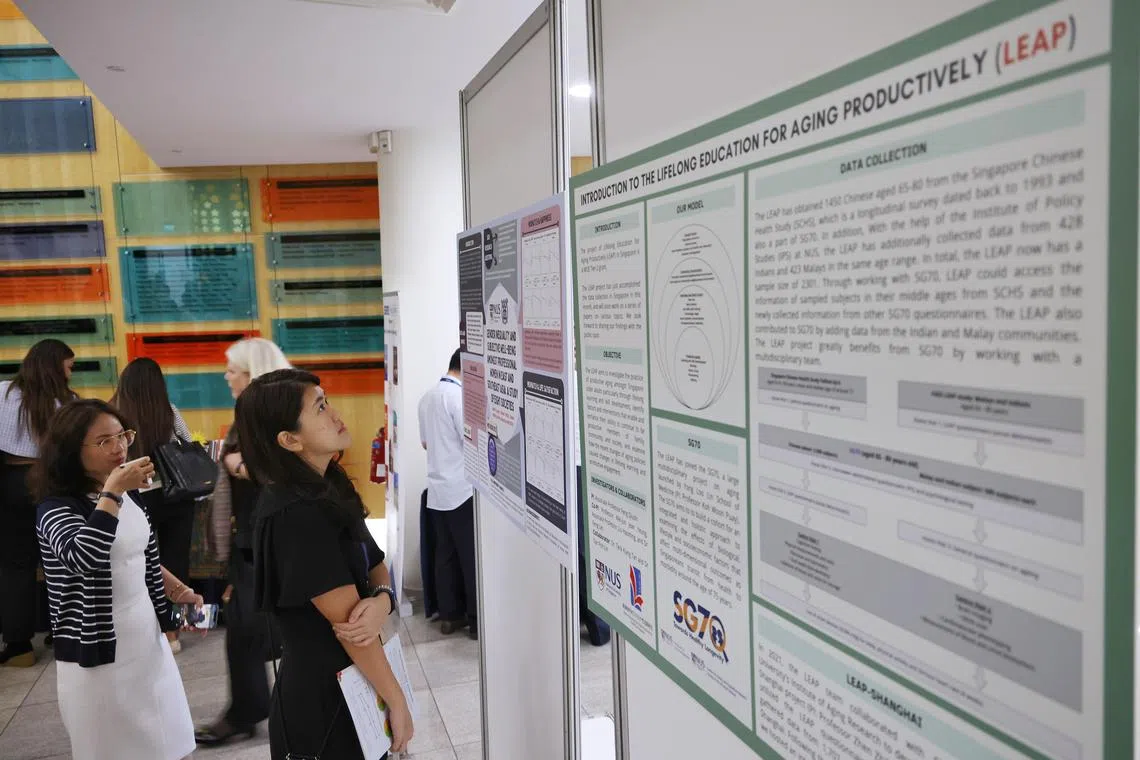Tech advances can help address needs of ageing population, says Indranee
Sign up now: Get ST's newsletters delivered to your inbox

Minister in the Prime Minister's Office Indranee Rajah speaking at the Population Association of Singapore conference on sustainable population and development in a new era on May 16.
ST PHOTO: JASON QUAH
Follow topic:
SINGAPORE - While Singapore has to grapple with the twin demographic challenges of a falling fertility rate and a rapidly ageing population, there are opportunities to be reaped as well.
The Republic can tap technological developments to address the needs of its rapidly ageing population, and longer lives allow seniors – with all their knowledge and expertise – to remain in the workforce longer, said Minister in the Prime Minister’s Office Indranee Rajah.
She said at a Population Association of Singapore conference on May 16 that low fertility rates, coupled with longer life expectancies, mean that Singapore has an ageing population without a young base to support it.
“Our resources will be increasingly stretched, given fewer working-age persons. Working adults will face increasing caregiving pressures... and may find this harder to balance alongside work,” she said. “Rising singlehood means more will eventually grapple with weaker familial networks as they age.”
The two-day conference, which ends on May 17, is organised by the National University of Singapore (NUS) Centre for Family and Population Research and the Population Association of Singapore.
Ms Indranee made these remarks in the light of Singapore’s resident total fertility rate (TFR) falling below 1 for the first time in the country’s history.
The TFR, which refers to the average number of babies each woman would have during her reproductive years, was 0.97 in 2023.
The resident old-age support ratio, which indicates the number of working adults supporting the elderly, is also expected to fall. There are 3.7 residents aged between 20 and 64 supporting each senior aged 65 and older now, and this number is expected to fall to 2.7 in 2030.
To tackle these demographic challenges, which will see about one in four citizens aged 65 and older by 2030, the Government will raise the retirement and re-employment age.
In 2026, the retirement age will be raised from 63 to 64, while the re-employment age will rise from 68 to 69 to support Singaporeans who want to work for a longer period of time.
On April 15, the Government launched the Tripartite Guidelines on Flexible Work Arrangement Requests,
This will help groups such as working parents and seniors who need more flexible work arrangements juggle family and work commitments, Ms Indranee said.
With more seniors living alone and care needs increasing, technology advances can also help in the care of the elderly. For example, machine learning and artificial intelligence can better monitor and interpret data from devices seniors wear.
Speaking to researchers and representatives from government and other sectors, Ms Indranee said academics can support the Government’s drive for evidence-based policymaking through their research on Singapore’s population challenges.
For example, about half of new fathers do not use their paternity leave entitlements, and researchers could study this issue to tackle the barriers fathers face in doing so.
She said: “We understand these are often due to barriers faced at the workplace, from concerns that their absence from work could affect their appraisals, to rather dated perspectives of gender norms among colleagues and supervisors.”

Attendees viewing exhibition boards at the Population Association of Singapore conference on May 16.
ST PHOTO: JASON QUAH
Another area the Government is keen to address is work-life balance, which has become increasingly important, she said.
This comes as the 2021 Marriage and Parenthood Survey, conducted by the National Population and Talent Division, found that a key concern affecting decisions on starting a family is the difficulty of juggling work and family commitments.
During the conference, a longitudinal study on work-from-home arrangements, or tele-working, and its impact on the well-being of married women was presented. The study was done given the popularity of such remote work arrangements during the Covid-19 pandemic.
The study, which tracked 358 working women in their 20s and 30s for four years, found that tele-working led to fewer work hours, significantly better work-life balance and higher life satisfaction.
Women who worked only or mostly from home worked about an hour less a day, compared with their peers who spent at least half their time in the office, said Dr Jeremy Lim-Soh, a research fellow at the Centre for Ageing Research and Education at the Duke-NUS Medical School.
Dr Tan Poh Lin, a senior research fellow at the Institute of Policy Studies, is the principal investigator of the study, and Dr Lim-Soh and Australian National University PhD student Jolene Tan are also authors of the study.
On the flip side, however, tele-working arrangements worsened workplace relationships.
Dr Lim-Soh said: “Past research showed that being physically close to your colleagues helps to facilitate good relationships with them in general.”

The two-day conference is organised by the NUS Centre for Family and Population Research and the Population Association of Singapore.
ST PHOTO: JASON QUAH
The study focused on married women of child-bearing age, as women usually shoulder more of the caregiving responsibilities and housework at home while juggling their careers, among other reasons.
Dr Lim-Soh said the study did not ask the women for the reasons behind their answers, but work-from-home arrangements do away with the commute to the office, giving them more time for their family, among other benefits, leading to better work-life balance.
The study found that work-life balance is more important to the women’s life satisfaction than the quality of their workplace relationships, he added.
He said: “We can see this as a trade-off. Tele-working improves work-life balance, but negatively affects workplace relationships. So that’s why many companies offer a hybrid arrangement, with a certain number of days in the office and a certain number of days working from home.”


